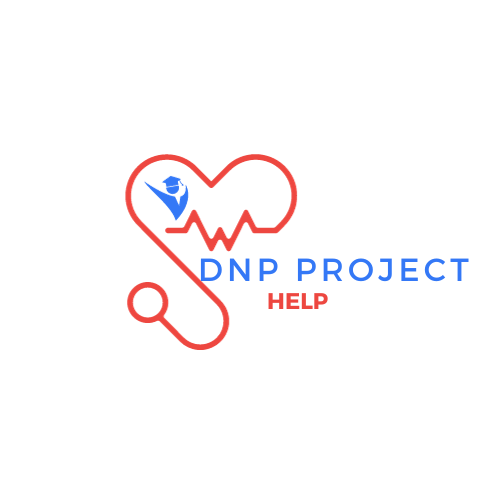
A PICOT Assignment, often used in healthcare and nursing classes, involves creating a clear, answerable question about a clinical situation using the PICOT format.
Table of Contents
What is a PICOT question?
In evidence-based practice (EBP), the PICOT question serves as a structured framework to formulate clinical questions that are specific, focused, and answerable. The acronym PICOT stands for five key elements, each of which plays a crucial role in shaping a well-defined clinical question:
Patient/Population/Problem (P):
- This element identifies the specific patient population or problem under consideration. It defines the characteristics of the individuals involved, such as their demographics, health conditions, or particular attributes relevant to the clinical scenario.
- Example: “In elderly patients with Type 2 diabetes…”
Intervention/Indicator (I):
- The intervention or indicator refers to the treatment, exposure, or diagnostic test being considered for the patient population. It outlines the action or strategy that is being applied or studied in the clinical scenario.
- Example: “…does the use of a specific medication or lifestyle intervention…”
Comparison/Control (C):
- This element establishes the basis for comparison. It identifies the alternative to the intervention, whether it’s a standard treatment, placebo, or another form of comparison. This helps in assessing the effectiveness of the intervention at an established benchmark.
- Example: “…compared to standard medical management…”
Outcome (O):
- The outcome specifies the anticipated result or effect of the intervention. It focuses on what the intervention aims to achieve or the impact it has on the patient’s health or well-being. Outcomes can be clinical, patient-centered, or related to specific endpoints.
- Example: “…impact glycemic control and reduce the risk of cardiovascular events?”
Time (T):
- Time refers to the timeframe over which the intervention is expected to produce the specified outcome. It adds a temporal dimension to the question, helping to define the duration during which the effects or changes are assessed.
- Example: “… over 12 months?”
Putting it All Together:
- Combining these elements results in a fully developed PICOT question, providing a clear and concise structure for designing research, guiding literature searches, and informing clinical decision-making.
- Example of a Complete PICOT Question: “In elderly patients with Type 2 diabetes, does the use of a specific medication or lifestyle intervention, compared to standard medical management, impact glycemic control and reduce the risk of cardiovascular events over 12 months?”
Significance in Evidence-Based Practice:
- The PICOT framework is integral to evidence-based practice as it helps practitioners focus on specific aspects of patient care, guiding the search for relevant evidence and facilitating the application of research findings to clinical decision-making. By formulating questions in the PICOT format, healthcare professionals enhance their ability to critically appraise and apply the best available evidence to address specific patient needs.
Why are PICOT questions important?
Significance of PICOT Questions in Research and Evidence-Based Practice:
1. Narrowing Down the Scope:
- One of the primary benefits of using PICOT questions is their ability to narrow down the scope of a research question. In the vast landscape of healthcare, where numerous factors can influence patient outcomes, a focused question is essential for conducting meaningful research. By systematically breaking down the research question into specific elements, the PICOT framework ensures that each aspect is addressed, making the question more precise and manageable.
- Example: Instead of a broad question like “What is the impact of diabetes treatment in elderly patients?” a PICOT question might specify, “In elderly patients with Type 2 diabetes, does the use of a specific medication or lifestyle intervention, compared to standard medical management, impact glycemic control and reduce the risk of cardiovascular events over 12 months?”
2. Making Searches for Relevant Evidence More Manageable:
- The specificity inherent in PICOT questions facilitates the search for relevant evidence. When conducting literature reviews or searching databases, researchers, and practitioners can use the PICOT elements to tailor their searches, ensuring that the evidence they find is directly applicable to the question at hand. This targeted approach saves time and resources, allowing for a more efficient and effective review of existing literature.
- Example: A search focused on the PICOT question above might include terms related to elderly patients, Type 2 diabetes, specific medications or lifestyle interventions, standard medical management, glycemic control, cardiovascular events, and a 12-month timeframe.
3. Ensuring Focus on Patient-Important Outcomes:
- PICOT questions play a crucial role in maintaining a patient-centered research approach. By explicitly including the patient or population element and the outcome element, these questions ensure that the research is designed to address outcomes that are meaningful and relevant to patients. This patient-centric focus aligns with the core principles of evidence-based practice, where the ultimate goal is to improve patient outcomes and experiences.
- Example: In the PICOT question, the outcome specified is the impact on glycemic control and the reduction of cardiovascular events. These outcomes are directly relevant to the well-being and health of elderly patients with Type 2 diabetes.
4. Guiding Research Design and Implementation:
- PICOT questions provide a structured framework for designing and implementing research studies. Researchers can use the elements of the question to guide the development of study protocols, ensuring that the study design aligns with the specific components outlined in the PICOT framework. This clarity in research design enhances the validity and applicability of the study’s findings.
- Example: The PICOT question not only guides the selection of variables for measurement but also influences decisions on the study population, intervention protocols, comparison groups, outcome assessments, and the duration of the study.
5. Enhancing Critical Appraisal of Evidence:
- When critically appraising existing evidence or research studies, the PICOT framework provides a structured approach. Practitioners can assess whether the research question was well-formulated, whether the study design aligns with the PICOT elements and whether the outcomes measured are patient-important. This critical appraisal ensures that the evidence is relevant and applicable to real-world clinical scenarios.
- Example: When reviewing a study, practitioners might assess how well the study’s population matches the specified patient population in the PICOT question, whether the intervention and comparison groups align with the specified elements, and whether the outcomes measured are consistent with the patient-important outcomes outlined in the PICOT question.
In summary, PICOT questions are indispensable tools in research and evidence-based practice, serving to refine and focus research questions, guide literature searches, ensure patient-centric outcomes, inform research design, and enhance the critical appraisal of evidence. By systematically incorporating these elements, healthcare professionals can contribute to a more rigorous and patient-centered approach to research and practice.
How do I write a PICOT question?
Writing a PICOT question involves systematically identifying and defining the essential elements that form the foundation of a focused and answerable research question. Here’s a detailed guide on each element:
Patient Population (P):
- Clearly define the patient population under consideration. Specify the demographic characteristics or clinical features that define the group you are studying.
- Example: “Adult patients with type 2 diabetes.”
Intervention or Indicator (I):
- Identify the intervention, exposure, or indicator that is the focus of your study. This is the specific action or strategy that you are investigating.
- Example: “A self-management program for type 2 diabetes.”
Comparison or Control Group (C):
- Determine the comparison or control group against which you will assess the effects of the intervention. This group provides a benchmark for evaluating the intervention’s effectiveness.
- Example: “Usual care.”
Outcome (O):
- Specify the outcome or outcomes you are interested in measuring. These should be relevant to the patient population and the intervention, reflecting the impact of the intervention on health or well-being.
- Example: “Glycemic control.”
Time Frame (T):
- Define the time frame over which you intend to observe and measure the outcomes. This adds a temporal dimension to your research question, providing context for the evaluation.
- Example: “Six months.”
Putting it All Together:
- Combine these elements to form a complete and structured PICOT question. Using the examples above:
- Example of a PICOT Question: “In adult patients with type 2 diabetes, does a self-management program compared to usual care improve glycemic control over six months?”
Additional Tips:
- Be Specific: Ensure that each element is specific and clearly defined. This specificity is essential for formulating a question that is focused and answerable.
- Consider Feasibility: While your question should be specific, it should also be feasible to study within the constraints of available resources, time, and ethical considerations.
- Relevance to Practice: Ensure that your PICOT question addresses a clinically relevant issue, with outcomes that matter to patients and are actionable in a healthcare setting.
- Review Existing Literature: Before finalizing your PICOT question, review existing literature to ensure that your question has not already been extensively studied and that there is a gap in the current evidence.
Did you enjoy our articles?
Click the order button below to get a high-quality paper.
You can talk to the writer using our messaging system and keep track of how your assignment is going.
Order NowExample of a Complete PICOT Question:
- “In adult patients with type 2 diabetes, does a self-management program compared to usual care improve glycemic control over six months?”
By systematically addressing each element, you create a research question that is specific, and focused and sets the stage for evidence-based inquiry. This PICOT question serves as a guide for study design, literature review, and the pursuit of evidence to inform clinical practice.
Here are some examples of PICOT questions:
Analyzing PICOT Questions: Examples in Detail
Let’s break down each of the provided PICOT questions to understand how they address the essential elements and contribute to focused research inquiries:
In adult patients with type 2 diabetes (P), what is the effect of a self-management program for type 2 diabetes (I), compared with usual care (C), on glycemic control (O) over six months (T)?
- Patient Population (P): Adult patients with type 2 diabetes.
- Intervention (I): A self-management program for type 2 diabetes.
- Comparison (C): Usual care.
- Outcome (O): Glycemic control.
- Time Frame (T): Six months.
Analysis: This PICOT question addresses the effectiveness of a self-management program for type 2 diabetes in improving glycemic control compared to usual care over a specific timeframe. It sets the stage for investigating a practical intervention in a well-defined patient population.
In hospitalized patients with pneumonia (P), what is the effect of early mobilization (I), compared with bed rest (C), on the length of hospital stay (O) (T)?
- Patient Population (P): Hospitalized patients with pneumonia.
- Intervention (I): Early mobilization.
- Comparison (C): Bed rest.
- Outcome (O): Length of hospital stay.
- Time Frame (T): Not explicitly mentioned but implied during the hospital stay.
Analysis: This PICOT question delves into the impact of an intervention (early mobilization) on an patient-important outcome (length of hospital stay) in the context of pneumonia. It contrasts two different approaches, providing a basis for exploring the potential benefits of early mobilization.
In infants with breastfeeding difficulties (P), what is the effect of lactation consultation (I), compared with no lactation consultation (C), on breastfeeding rates (O) at six weeks postpartum (T)?
- Patient Population (P): Infants with breastfeeding difficulties.
- Intervention (I): Lactation consultation.
- Comparison (C): No lactation consultation.
- Outcome (O): Breastfeeding rates.
- Time Frame (T): Six weeks postpartum.
Analysis: This PICOT question targets a specific population (infants with breastfeeding difficulties) and assesses the impact of an intervention (lactation consultation) on breastfeeding rates compared to no consultation. The specified time frame (six weeks postpartum) adds clarity to the evaluation period.
Key Considerations:
- Precision: Each PICOT question is precise, clearly defining the patient population, intervention, comparison, outcome, and time frame.
- Relevance: The questions are clinically relevant, addressing scenarios commonly encountered in healthcare practice.
- Actionability: The outcomes specified are actionable in a healthcare setting, providing insights that can inform clinical decision-making.
- Feasibility: The questions are framed in a way that allows for feasible study designs, considering practical aspects of implementation and measurement.
These examples illustrate how PICOT questions serve as valuable tools for formulating research questions that are focused, answerable, and directly applicable to clinical practice. They guide researchers, clinicians, and educators in designing studies that contribute meaningfully to evidence-based healthcare.
Here are some additional tips for writing PICOT questions:
- Clarity and Conciseness:
- Use language that is clear and concise, avoiding unnecessary complexity. Ensure that each component of your question is easily understandable to both researchers and practitioners.
- Specificity:
- Be specific about the:
- Patient Population (P): Clearly define the characteristics of the patients under consideration.
- Intervention (I): Specify the exact intervention, exposure, or strategy being studied.
- Comparison (C): Identify the comparison or control group for reference.
- Outcome (O): Clearly state the specific outcomes or endpoints of interest.
- Time Frame (T): Clearly define the timeframe over which outcomes will be measured.
- Be specific about the:
- Answerability:
- Ensure that your question is answerable with research evidence. Consider whether the study design, measurements, and data collection methods align with the elements of your question, allowing for a meaningful and actionable answer.
- Example of a Well-Formulated PICOT Question:
“In postmenopausal women (P) with osteoporosis, does the use of a daily calcium and vitamin D supplement (I) compared to no supplementation (C) result in a significant increase in bone mineral density (O) at the lumbar spine after one year (T)?”
Explanation:
- Clarity and Conciseness: The question is straightforward and easily understood.
- Specificity:
- Patient Population (P): Postmenopausal women with osteoporosis.
- Intervention (I): Daily calcium and vitamin D supplement.
- Comparison (C): No supplementation.
- Outcome (O): Increase in bone mineral density.
- Time Frame (T): One year.
- Answerability: The question is structured in a way that allows for the design of a study with clear parameters, measurable outcomes, and a defined timeframe, making it conducive to research investigation.
By adhering to these guidelines, you create a PICOT question that not only meets the criteria for a well-structured research question but also serves as a practical and actionable guide for evidence-based practice and research endeavors.
Get Help with DNP PICOT Question
Stuck on your DNP PICOT question? Don’t sweat it! We have expert writers who know the ins and outs of crafting top-notch questions to impress your professor and set your project off on the right foot. Skip the stress and get top-quality work – choose us for a PICOT question that shines!
References
- Melnyk, B. M., & Fineout-Overholt, E. (2011). Evidence-based practice in nursing and healthcare: A guide to best practice (3rd ed.). Philadelphia: Wolters Kluwer Health/Lippincott Williams & Wilkins.
- Sackett, D. L., Rosenberg, W. M. C., Gray, J. A. P., Haynes, R. B., & Richardson, W. S. (1996). Evidence-based medicine: How to do it. London, UK: Churchill Livingstone.
- Shaltry, J. A., & DiCenso, A. (2006). Nursing research: Building on problems and questions. In M. L. Parker & C. M. Smith (Eds.), Nursing theories and nursing practice (3rd ed., pp. 607-634). Philadelphia: Lippincott Williams & Wilkins.
- Siddiqi, T. A. (2011). Formulating effective clinical questions: A key to evidence-based practice. In L. A. Walker & W. R. Rundall (Eds.), Clinical pharmacy and therapeutics (5th ed., pp. 23-30). Philadelphia: Churchill Livingstone Elsevier.
- Walker, L. A., & Rundall, W. R. (Eds.). (2011). Clinical pharmacy and therapeutics (5th ed.). Philadelphia: Churchill Livingstone Elsevier.
Must Read:


